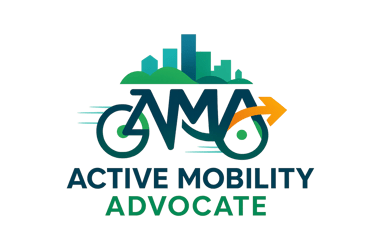What is Active Mobility?
Discover the essence of active mobility—human-powered transportation like walking and cycling—and its transformative impact on health, the environment, and urban living. This comprehensive guide delves into the benefits, challenges, and global initiatives promoting active mobility, offering readers valuable insights and resources to embrace and advocate for sustainable, inclusive movement in their communities.
MAIN PAGE
Wayne Odhiambo
5/12/20253 min read


An Introduction to Moving Better for People, Planet, and Prosperity
In a world grappling with climate change, traffic congestion, rising health costs, and social exclusion, the way we move has never mattered more. At Active Mobility Advocate, we believe mobility is not just about getting from point A to B—it's about how we move, who gets to move, and what kind of world we build in the process. This is where active mobility comes in.
What is Active Mobility?
Active mobility refers to human-powered forms of transportation, primarily walking, cycling, and the use of micro-mobility devices like skateboards, scooters (non-electric and electric), rollerblades, and even wheelchairs. At its core, it emphasizes movement that uses physical energy while being efficient, inclusive, and sustainable.
Unlike car-centric systems, active mobility prioritizes:
People over vehicles
Public space over parking
Health over pollution
Equity over exclusion
It’s not just a lifestyle—it's a paradigm shift in how cities function, how infrastructure is designed, and how we tackle the pressing challenges of the 21st century.
Why Active Mobility Matters
🌍 1. Environmental Sustainability
Transport contributes nearly 25% of global CO₂ emissions, with most of it from cars and trucks. By choosing to walk or cycle, we drastically reduce our carbon footprint. Imagine a city where the air is clean, and the streets are quiet—not from inactivity, but from human-powered activity.
❤️ 2. Public Health
Regular physical activity improves cardiovascular health, reduces obesity, and enhances mental well-being. Active mobility builds physical activity into daily routines, fighting sedentary lifestyles—without needing a gym membership.
🏙️ 3. Urban Livability
Walkable, bike-friendly neighbourhoods are more connected, economically vibrant, and safe. Streets designed for people encourage interaction, creativity, and commerce.
⚖️ 4. Equity and Inclusion
Not everyone can afford a private car. Walking and cycling are often the most affordable and accessible means of transport—especially for youth, women, the elderly, and lower-income populations. Infrastructure that supports active mobility expands access to jobs, schools, and services.
Challenges to Active Mobility
Despite the benefits, active mobility faces real challenges:
Poor or non-existent sidewalks and cycling paths
Lack of secure bike parking or showers at workplaces
Road safety risks and traffic crashes
Cultural and social stigma ("walking is for the poor")
Policy neglect in favour of motorized transport
These barriers are real—but they’re not insurmountable.
What Can You Do?
🧠 1. Get Informed
Learn about your city's transport policies. Follow local debates on road design, urban planning, and mobility justice. Read up on the global movements pushing for better infrastructure.
🚲 2. Start Small
Walk or cycle to the store. Join a car-free day. Take a friend on a bike ride. Every step is a statement.
📣 3. Speak Up
Demand safer streets from your local leaders. Support pedestrian and cyclist-friendly infrastructure. Join or start a local advocacy group.
Our Mission at Active Mobility Advocate
We're building a platform to:
Demystify active mobility through engaging articles, interviews, and infographics.
Bridge the gap between research, policy, and everyday experiences.
Celebrate stories of active mobility from around the world—especially from underrepresented communities.
Curate resources to help readers advocate for safer, cleaner, and more inclusive transport.
Whether you’re a daily cyclist in Nairobi, a pedestrian in Manila, or a student in Mexico City dreaming of bike lanes, this platform is for you.
The Numbers That Matter
Walking Dominance: In cities like Nairobi, walking accounts for approximately 48% of daily trips, highlighting its importance in daily mobility.
Cycling Share: Cycling represents a smaller portion, with about 1–3% of daily trips in Nairobi.
Budget Allocation: Despite the reliance on non-motorized transport, investments are minimal. UN Environment recommends allocating at least 20% of transport budgets to walking and cycling infrastructure.
Economic Benefits: Investments in cycling infrastructure can yield a $5 return for every $1 spent, due to health care savings, reduced traffic-related expenses, and increased economic activity.
Protected Bike Lanes: Implementing protected bike lanes can significantly increase cycling rates. For instance, Seville saw an increase from 0.6% to 7% of trips over six years after developing an 80-mile network of protected bike lanes.
Resources to Get Started 🚀
Here are some trusted organizations, tools, and reports to deepen your understanding and involvement:
🌐 Global Organizations
World Resources Institute – Ross Center for Sustainable Cities
UN-Habitat – Urban Mobility
📚 Key Reports & Toolkits
Global Bicycling and Walking Benchmarking Report – Alliance for Biking & Walking
Transforming Urban Mobility – World Bank (2023)
Street Design Manual – National Association of City Transportation Officials (NACTO)
🛠️ Apps and Tools
Strava – Track your rides and connect with a local biking community.
OpenStreetMap – Explore or contribute to public maps of walkable/bikeable routes.
PeopleForBikes City Ratings – Learn how bike-friendly your city is.
Join the Movement
This is just the beginning. Active mobility is not just a transport solution—it’s a movement. A movement for breathable cities, for dignified access, for freedom of movement. At Active Mobility Advocate, we’re proud to be part of it. Stick around for upcoming articles on cycling culture, policy deep-dives, street design case studies, interviews with local changemakers, and data-driven analyses.
👉 Got a story, idea, or photo to share? Contact us or tag us on social media using #ActiveMobilityAdvocate.
Let’s walk, cycle, and roll toward a better future—together.
